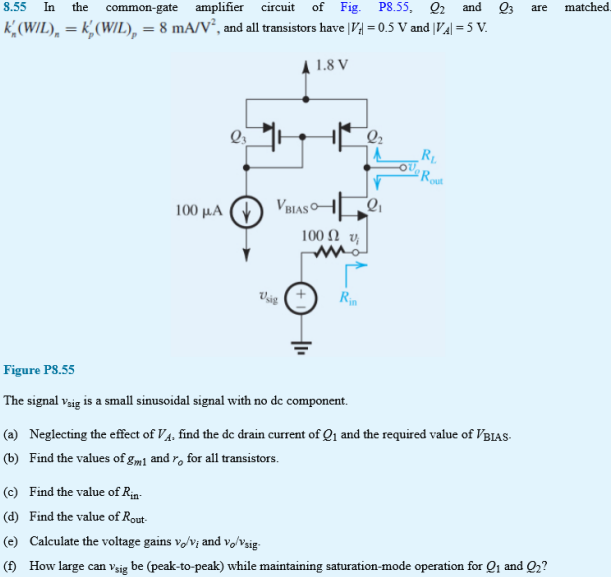In the common-gate amplifier circuit of Fig. P8.55, Q2 and Q3 are matched kn’(W/L)n = kp’(W/L)p = 8 mA/V2, and all transistors have ∣Vt∣ = 0.5 V and ∣VA∣ = 5 V. Figure P8.55 (a) Neglecting the effect of VA, find the de drain current of Q1 and the required value of VBIAS. (b) Find the values of gm1 and ro for all transistors. (c) Find the value of Rin. (d) Find the value of Rout (e) Calculate the voltage gains vo/vi and vo/vsig. (f) How large can vsig be (peak-to-peak) while maintaining saturation-mode operation for Q1 and Q2?



You'll get a detailed, step-by-step and expert verified solution.
 Work With Experts to Reach at Correct Answers
Work With Experts to Reach at Correct Answers